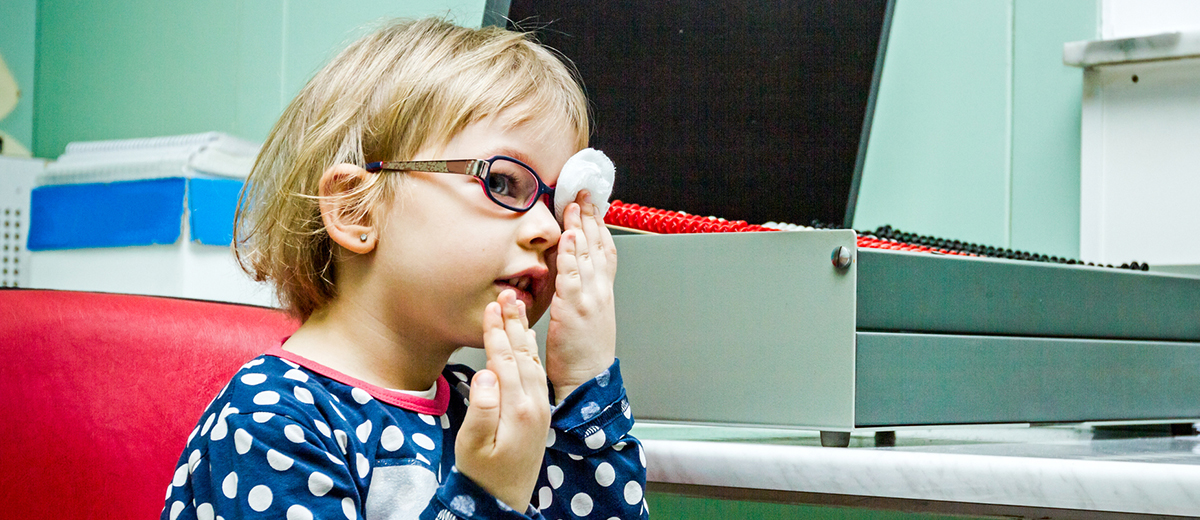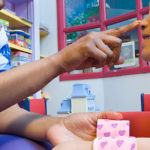The first step most people take when an eye injury occurs is to flush the eyes out with water. But is that the right choice? Or could that cause more damage? It depends on the cause of the eye injury. If the child you are treating has a cut or a puncture, washing the eyes out with water is NOT the right choice. But if he or she gets sand in his or her eyes, using an irrigate eye wash or a little lukewarm water to rinse it out works just fine.
Different kinds of eye injuries require different treatment and treating an eye injury properly can prevent permanent damage and reduce pain more quickly. Here are a few tips to keep in mind when treating eye injuries:
- Wash your hands or use hand sanitizer.
- Do not touch, rub or apply pressure to the eye.
- Do not try to remove any objects stuck in the eyes.
- Do not apply ointment or medication to the eyes.
- Avoid giving aspirin, ibuprofen or other non-steroidal, anti-inflammatory drugs. These drugs thin the blood and may increase bleeding.
- Keep the child as calm and comfortable as possible.
- Recommend to the child’s parent that they see a doctor as soon as possible, preferably an ophthalmologist.
The best way to treat an eye injury depends on the cause of the injury: cuts and punctures, foreign particles and material debris, chemical burns, blow to the eye, or sand and small debris.
Cuts and punctures:
- Use sterile tape or a roller bandage to gently apply a shield or patch to the bones surrounding the eye. Keep pressure off the eye.
- Do not rinse with water.
- After you have finished protecting the eye, seek additional medical attention immediately.
Foreign particles and material debris:
- Lift the upper eyelid over the lashes of the lower lid.
- Blink several times and allow tears to flush out the particle.
- If the particle remains, keep the eye closed and recommend to the child’s parent that they see a physician immediately.
Chemical burns:
- Immediately flush the eye with eyewash or plenty of lukewarm, clean water. In some cases, it may be best to flush for up to 20 minutes. Click here to shop MacGill’s selection of eye wash products.
- Seek additional medical treatment immediately.
Blow to the eye:
- Gently apply a small cold compress to reduce pain and swelling; do not apply any pressure.
- Keep in mind that even a light blow can cause a significant eye injury.
- If a black eye, pain or visual disturbance occurs even after a light blow, immediately contact an eye medical professional or send the child to the emergency room.
Sand or small debris:
- Flush out eye(s) with irrigate eye wash.
- Reminder: do not rub the eye.
- If the debris doesn’t come out, lightly bandage with gauze and tape or gently wrap a sterile roller bandage around head. Recommend to the child’s parent that they see a physician immediately.





